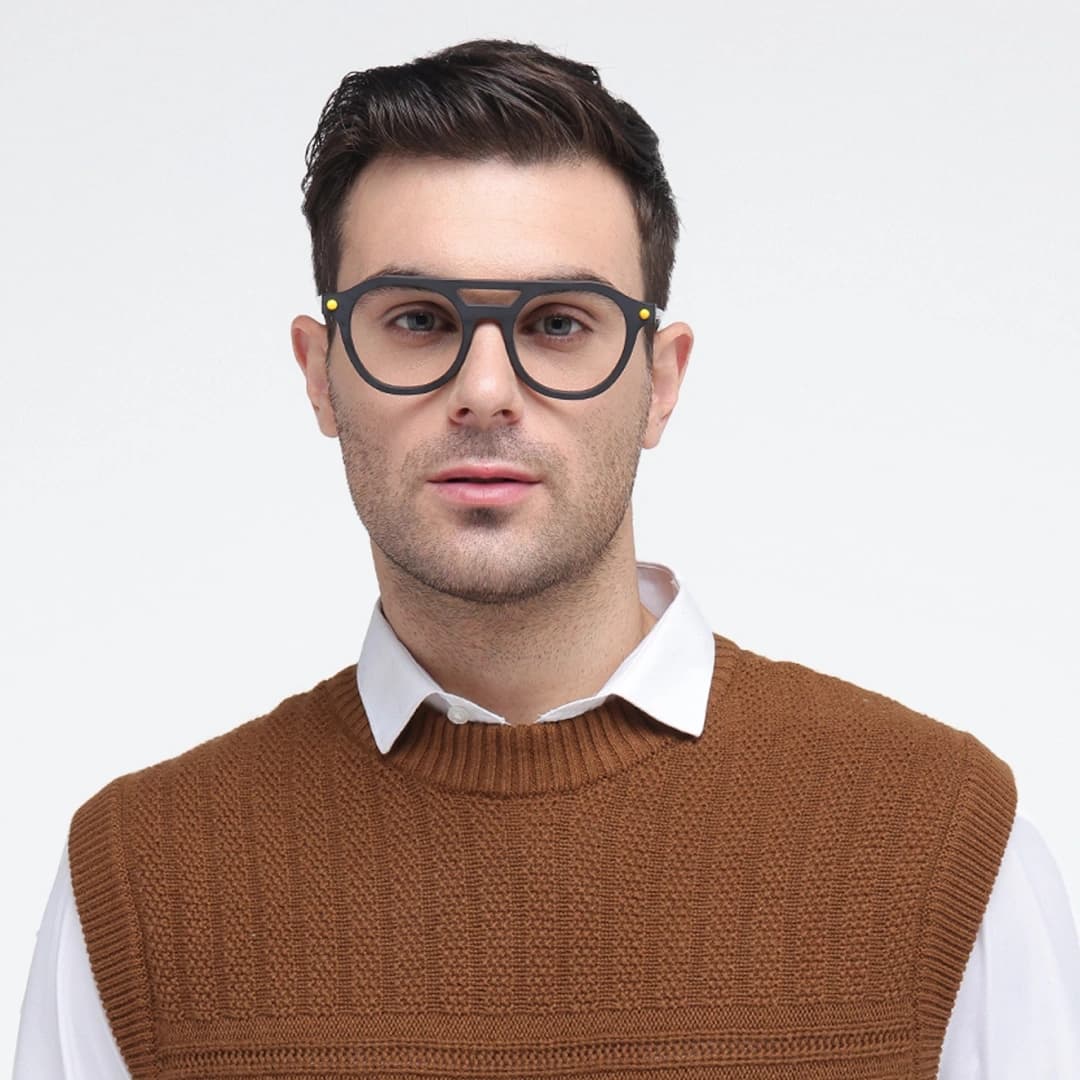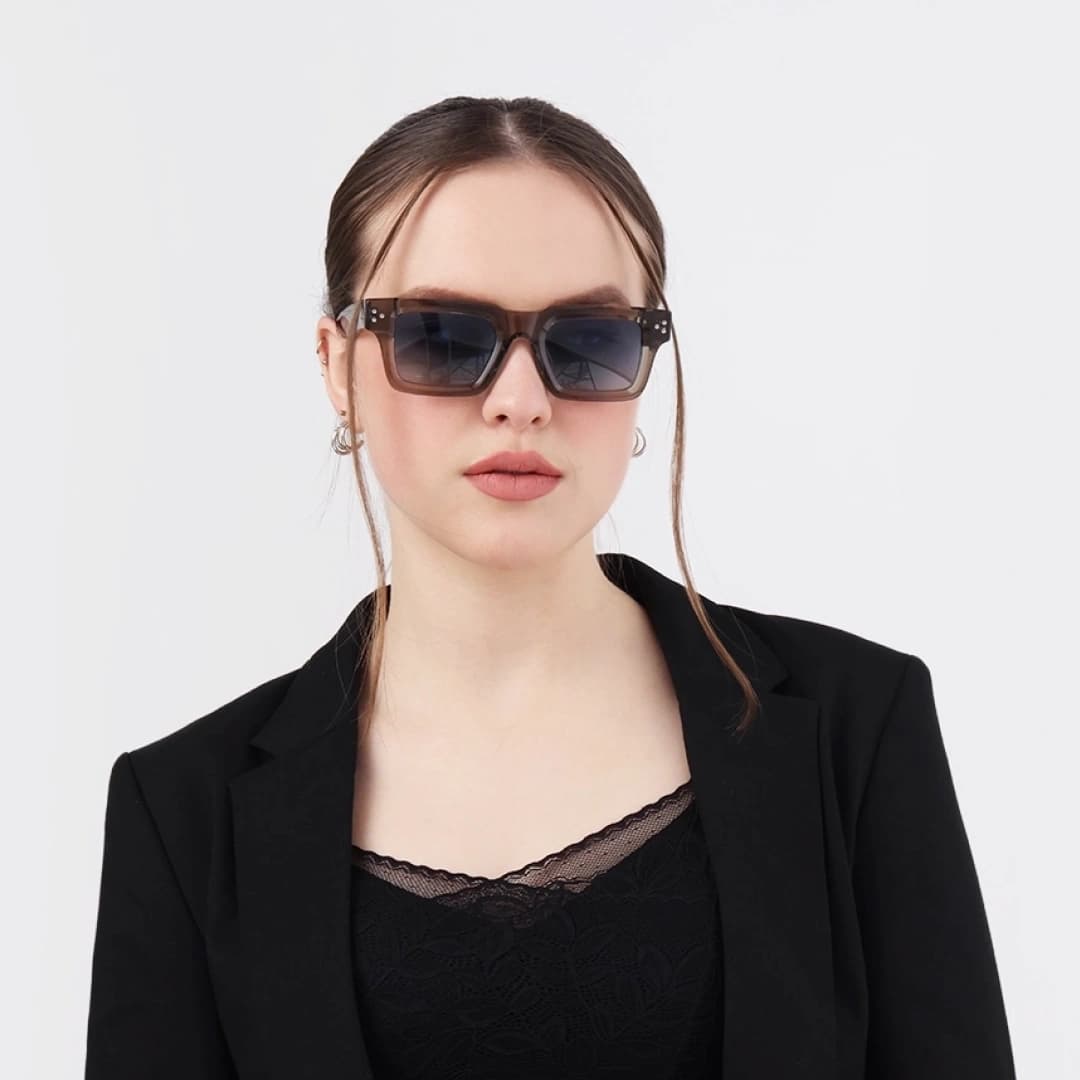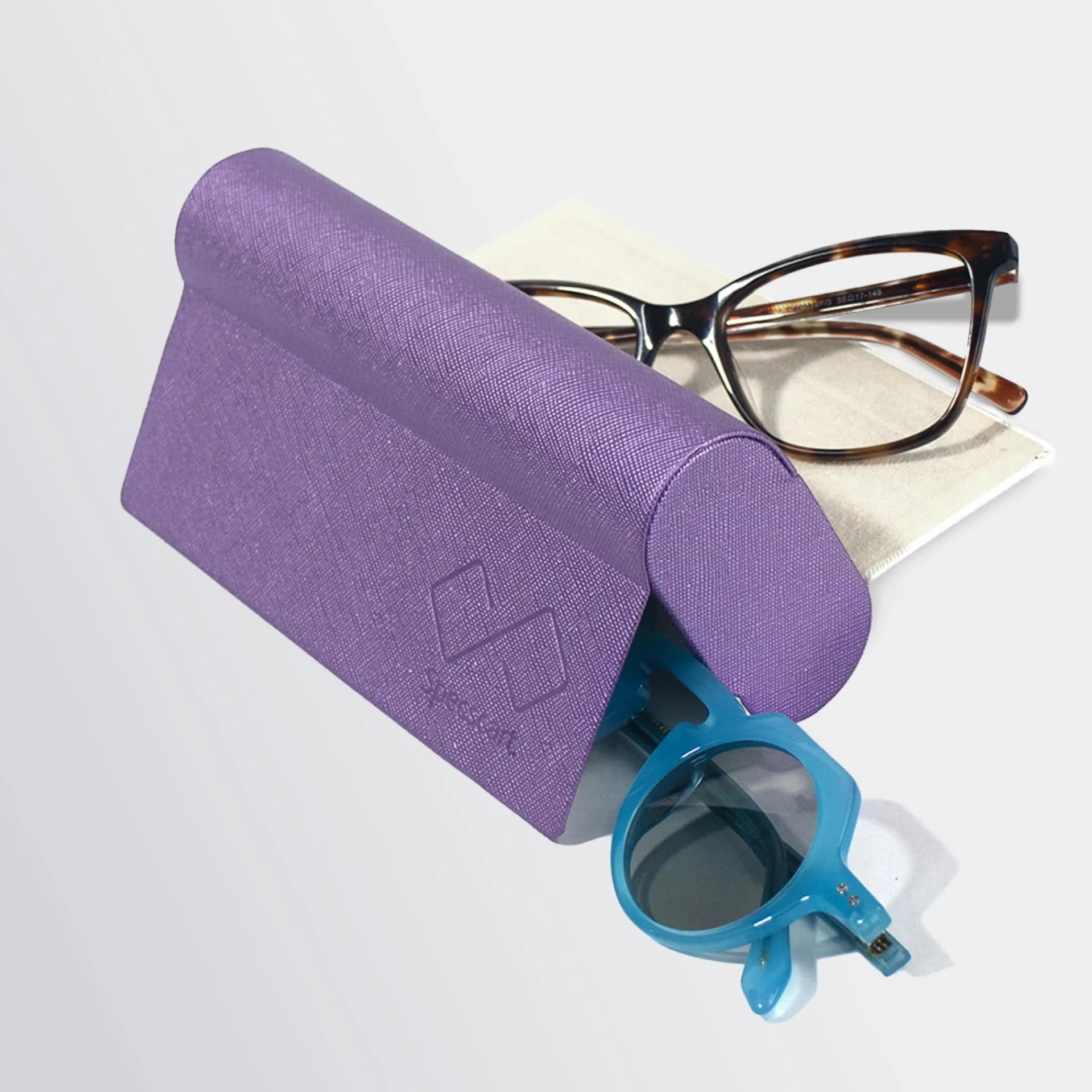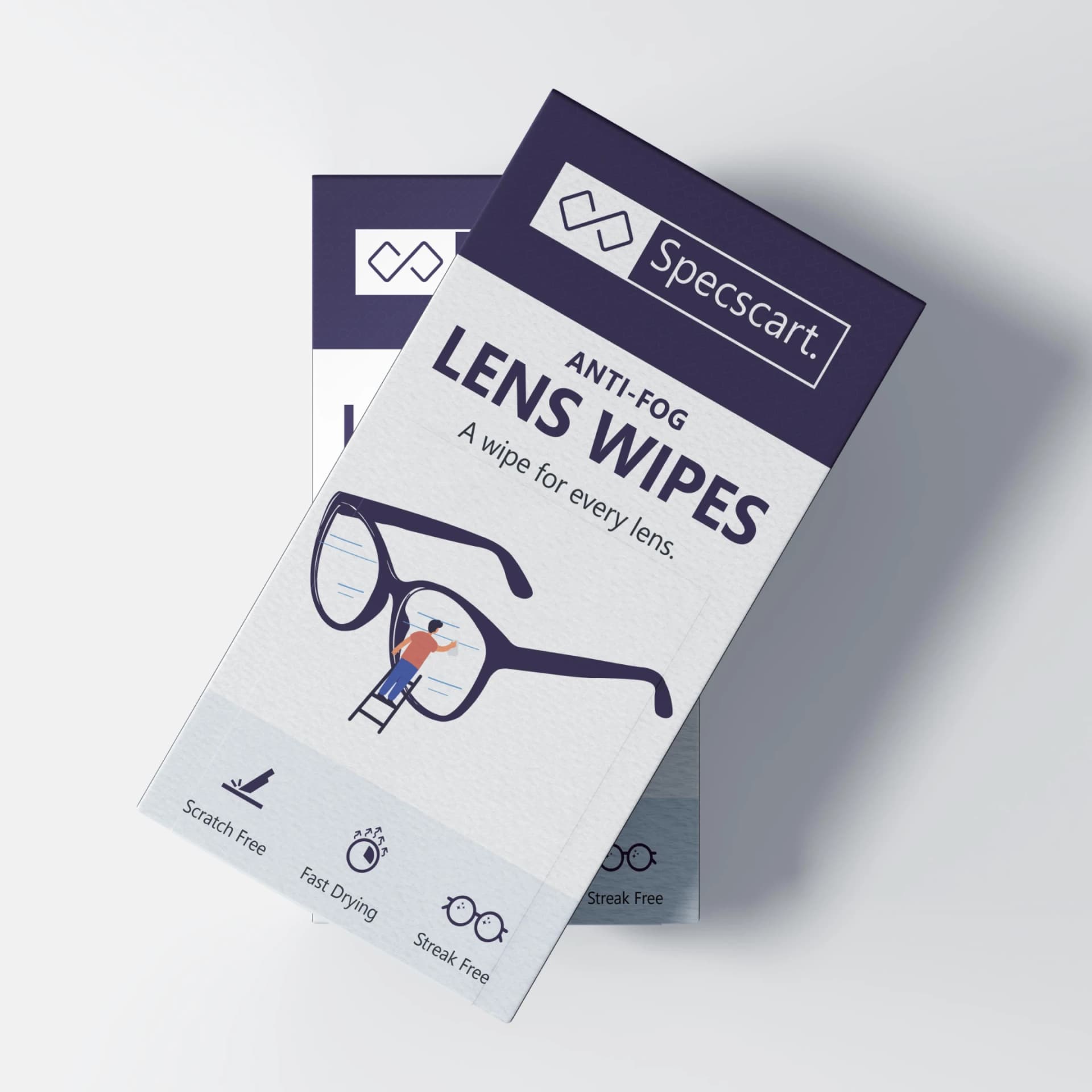Eyeglasses have become part and parcel of our lives. Nowadays, a large section of the global population depends on spectacles for crystal-clear vision. Truth be told, glasses have become so common that we rarely pay attention to their structure and composition.
Even after working in the eyewear domain for several years, I tend to overlook some of the most fascinating parts that make an eyeglass, one of which includes the nose bridge. Thus, this post is an effort by Specscart to enlighten readers about glasses nose bridges - the unsung hero of spectacle construction.
What is an Eyeglass Nose Bridge?
When you think of glasses, the first thing that pops into everyone’s mind is the shape of the lens, the frame colour, the material used, patterns on the frame front, and likewise. These are, undoubtedly, the standout parts of every pair of spectacles.
However, other parts like nose pads, nose bridges, hinges, etc., also play a pertinent role. It is quite easy to overlook these parts as they are simple and not prominently marked. But, the fact of the matter remains that everything serves a function.
As the name suggests, the nose bridge of an eyeglass ‘bridges’ the nose to link both lenses. It is that part of an eyeglass that makes contact with your nose. Therefore, the nose bridge also shares its name with the nasal bridge on your nose.
Nose bridges provide comfort and a snug fit to spectacles, ensuring that the wearer is not bothered by the constant slipping and sliding. The function is complemented by the different types of nose pads, as well.
Composition of Glasses Nose Bridges
An eyeglass nose pad has two distinct dimensions - the bridge bump and the bridge aperture.
The bridge bump is the swollen or upswept part of the frame bridge. It provides space for your nasal bridge or the top of your nose while ensuring that your glasses stay secured on your face.
On the other hand, the bridge aperture or width is the space between the lenses for the width of your nose. Its measurement ranges from 14 mm to 24 mm, under usual circumstances. If your nose is narrow or your eyes are, you would need a lower number, such as 14 mm or 18 mm. On the other hand, if your nose is wider or your eyes are set distinctly apart, then the bridge aperture will be 18 mm or higher.
The bridge aperture measurement is crucial to ensure that your spectacles fit perfectly. In fact, our Find Fit page, which helps you get the most snugly fitting frame online, also comes with a ‘bridge’ measurement section.
Now that we have gauged what an eyeglass nose bridge is along with its composition, let us dabble a bit into its history.
History of Glasses Nose Bridges: From the 18th Century to Modern Times
Eyeglass Nose Bridges in the 1700s
The relationship between glasses nose bridges and frames is as old as time because one cannot exist without the other. The antique glasses of the 1700s were simple and purely functional. They were made of materials like iron, silver and heavy steel. Therefore, the frame bridges of those times were plain and simple, mainly intended to ‘bridge’ the gulf between the two lenses of a monocle.
Eyeglass Nose Bridges in the Early 1800s
During the 1800s, lighter materials like gold and common steel came into the scenario and glasses nose bridges changed a bit. The most common frame bridges of the time included the C-bridge, the English bridge, the K-bridge and the X-bridge. The C-bridge was the simplest and the most popular design till 1835. It had a simple upward arch that linked both lenses.
Similarly, the English bridge has a wave-like arch that makes the spectacles more snugly fitting. The X-bridge was very wide and failed to garner mainstream attention. Lastly, the K-bridge created the illusion of ‘nothingness’ on the frame and was a much preferred style for the women of the 1800s.
Eyeglass Nose Bridges in the Mid-1800s
During the 1850s, the scroll bridge appeared. It helped simplify the process of making glasses. Previously, opticians had to solder nose bridges to the rim of the spectacle. But, the scroll bridge had ‘flanges’ that flared upwards and were affixed to the rim for a robust and sturdy collection. Thus, opticians could produce more glasses without losing quality. And, the first step towards mass production was taken.
Eyeglass Nose Bridge of Modern Times: Late 1800s to the 1900s
The modern leap within glass nose bridges emerged with the inception of the saddle bridge. According to historians, the saddle bridge probably appeared between the 1870s and the 1880s. The design ensured a more secure fit and the size of frames could be enlarged, as well. Thus, the first strive towards glasses resembling those of modern times happened.
The Windsor glasses of the 1880s were a turning point, as these frames were circular, and had metal rims, and bow temples that offered excellent stability. They were massively popular till the 1920s. The Windsor glasses are similar to the glasses that John Lennon wore and made popular centuries later.
The remnants of frame bridge’s history ripple even today. Even now, the saddle bridge has not faded into obscurity and is used regularly by opticians for frames without nose pads.
Types of Glasses Nose Bridge
After a brief about their history, it is time to move to contemporary times and check out the various types of nose bridges.
1. The Saddle Bridge
The saddle nose bridge is the most common design in plastic or acetate frames that come without any nose pads. The saddle bridge is a curved piece of plastic that spans across the entire width of your nose and follows its contours.
The saddle bridge is very advantageous, as it distributes the weight of the frame across a larger surface area and ensures comfort and a superbly stable fit. These frame bridges also have a modern and contemporary look, something that we all love, isn’t it? Lastly, the saddle bridge is low maintenance.
2. The Keyhole Bridge
The second and rather unique glasses nose bridge type is the keyhole bridge. It is usually found in retro or vintage-inspired acetate and plastic frames. As the name suggests, the keyhole bridge is shaped like an old-fashioned keyhole with a wider top and a narrower bottom.
This type of frame bridge is a great choice if you want some wriggle room in your frame. Unlike the saddle bridge, the keyhole bridge is designed to distribute the weight of the frames on the sides of the nose as opposed to the top. Therefore, glasses with a keyhole bridge are great for people with wider noses.
Other benefits of keyhole bridges include greater flexibility and aesthetic appeal. If you feel that the saddle bridge on your frame is causing your lenses to feel wonky, a frame with a keyhole bridge design might be it.
3. Double Bridge
The double bridges of glasses are stylish and functional. They infuse a high-fashion and classy feel to any pair of spectacles. The double bridge simply means that there is an extra metal bar connecting both the rimes of the glasses above your nose bridge.
These types of glasses nose bridges enhance stability, durability and comfort for the spectacle-wearer. They are most commonly seen in pilot glasses but are also found in other types of glasses.
Key Takeaways
So, there we have it, a comprehensive overview of the three types of nose bridges on glasses. Any pair of spectacles is incomplete without nose bridges. They ensure that your glasses fit well, are comfortable and stay in place.
Caution: You may become style obsessed
Your way finder
2000+ Trendy Styles

Fashion Forward Sunnies




















































